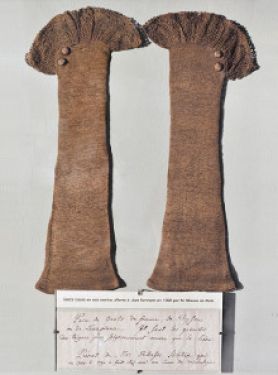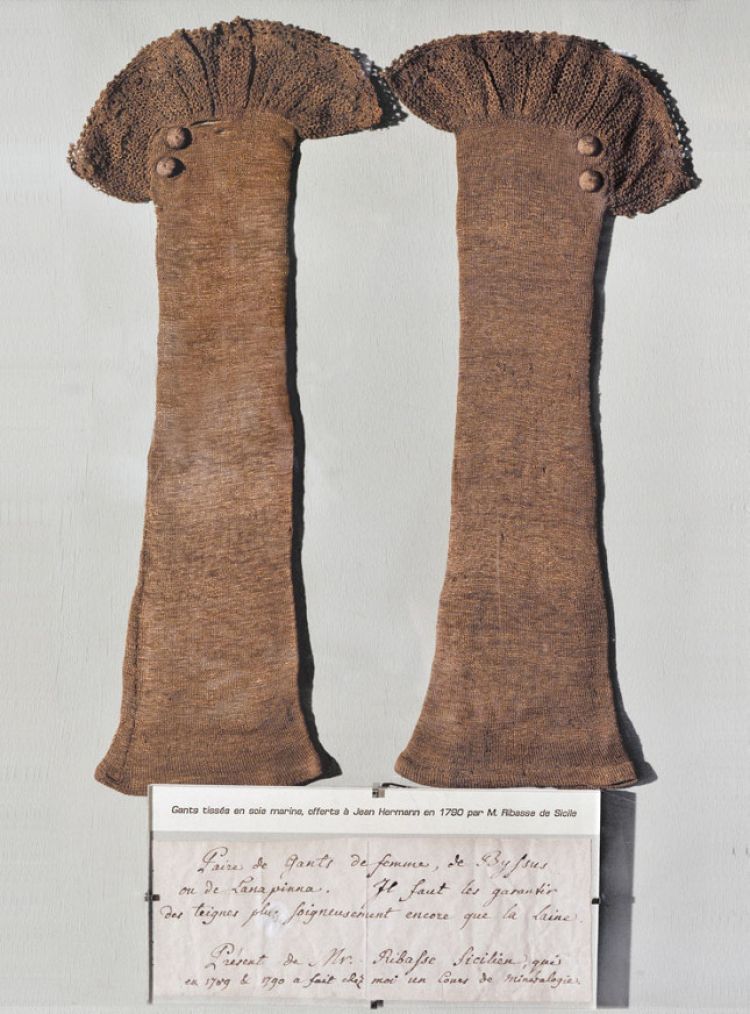Sea silk gloves (Noble Pen Shell or Fan Mussel, Pinna nobilis)

These sea silk gloves became part of Jean Hermann's natural history cabinet which helped to launch the Museum. A handwritten note by Jean Hermann informs us: “Pair of woman's gloves made of Byssus or Lana pinna. They need to be protected from clothes moths even more carefully than wool. Donated by M. Ribasse, a Sicilian who gave lectures in mineralogy at the University in 1789 and 1790”.
Sea silk is made from filaments that allow the bivalve mollusc, Pinna nobilis, to attach itself to rocks. They can be spun into a kind of brown silk with golden glints and this was considered as a precious material in Antiquity and the Middle Ages. It was used to make coats for the Pharaohs and High Priests of Egypt. In Sicily, Sardinia or Calabria, gloves and a fabric called Tarentine were woven from it.
The Fan Mussel lives only in the Mediterranean, it is one of the largest seashells in the world and can reach up to 1.2m in length. Formerly numerous, its population is in sharp decline. Abusive culling, trawling and chemical pollution are the main reasons. This species is strictly protected on French territory.
